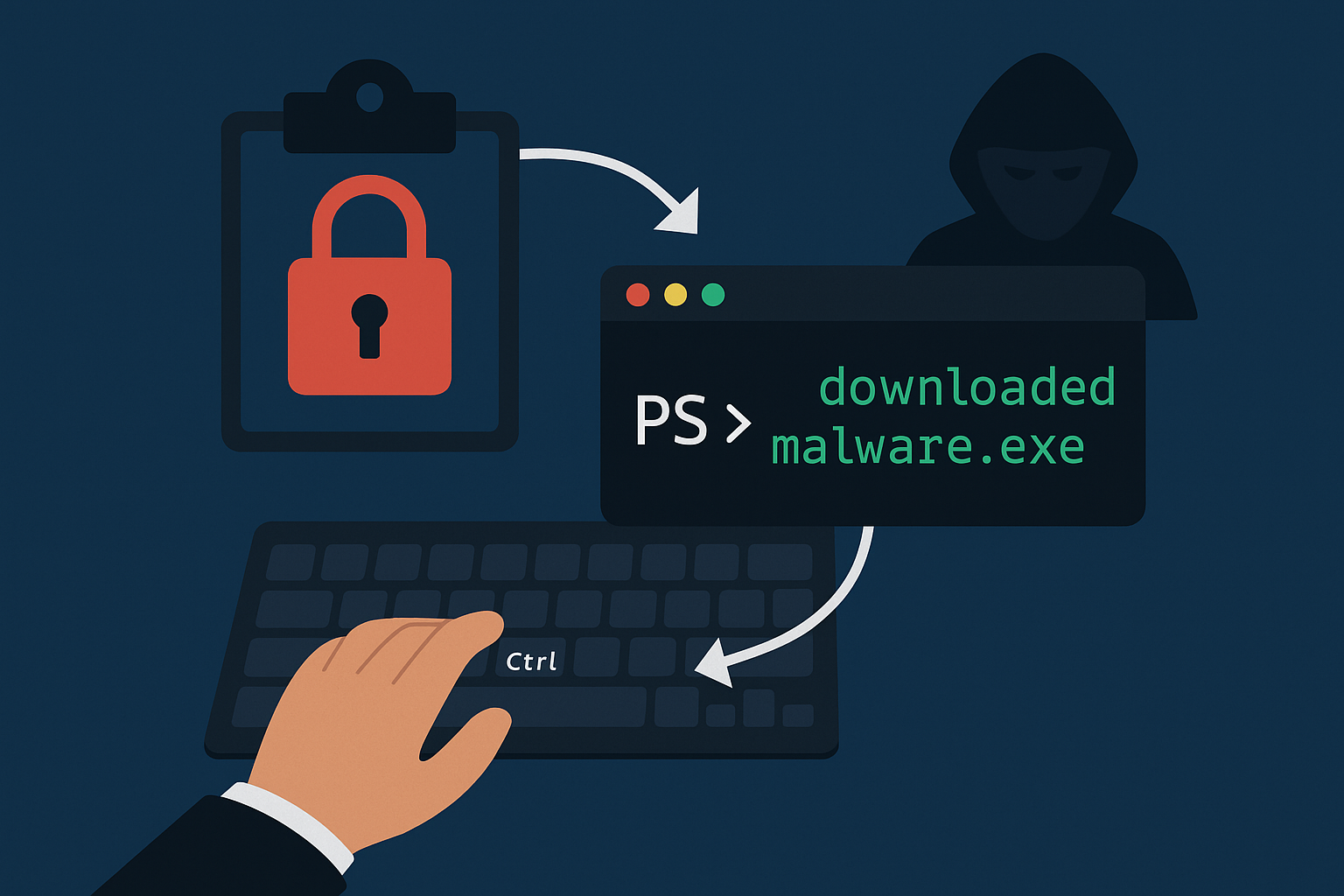The Rise of Silent Social Engineering Threats
In a world where sophisticated malware often grabs the headlines, a new threat is emerging, quieter, stealthier, and more dangerous in its simplicity. Known as “FileFix” attacks, this method manipulates users into running malicious commands by silently altering their clipboard contents. These attacks bypass antivirus tools and EDR agents, making them especially dangerous for businesses that rely on traditional detection methods.
What Is a FileFix Attack?
The term “FileFix” refers to a silent social engineering attack that uses clipboard hijacking via websites. A user visits a compromised webpage or a malicious online tool (often disguised as a legitimate file converter or utility). When they copy a PowerShell command or script from the site—believing it to be safe—the content that’s actually pasted into their terminal or command prompt is malicious.
Imagine copying what looks like a command to fix a corrupted ZIP file, only to paste a command that silently downloads malware or creates a backdoor user on your system.
This is not theoretical. Cybersecurity researchers have already observed this method being used in the wild, and unlike traditional malware, there are no files to scan or signatures to match.
Why It Works
This attack method relies on human trust and user behavior, not software vulnerabilities. Here’s why it’s effective:
-
No file = No scan: Since the attack doesn’t rely on downloading an executable, traditional antivirus and EDR solutions may miss it.
-
Abuses trust: Users often trust what they copy from a support site, YouTube tutorial, or tech blog—especially if they’re troubleshooting a problem.
-
No alerts: Many clipboard modifications happen in the background without user prompts or warnings.
How to Defend Against Clipboard Hijacking Attacks
1. Train Users to Be Suspicious of Copy-Paste Commands
Encourage employees to inspect what they paste into terminals—especially PowerShell or Bash. A simple Ctrl+Shift+V (paste and inspect) habit can prevent disaster.
2. Restrict PowerShell and Admin Tool Access
Limit the use of PowerShell, Command Prompt, or terminal-based tools to authorized users. Use group policies to restrict access on endpoints that don’t require it.
3. Leverage Endpoint Protection With Behavior Monitoring
Solutions like the ForceProtect agent offer advanced endpoint visibility. Behavioral analysis may detect abnormal PowerShell activity—even if no malware is dropped.
4. Use a Browser Isolation Layer
Enterprise browser isolation tools can help sandbox or inspect clipboard activity on unknown websites.
5. Monitor Clipboard Activity
Some EDR and DLP solutions can track clipboard changes and flag unexpected clipboard injections.
The Bigger Lesson: Security Isn’t Just About Malware
“FileFix” is a perfect example of a non-malware attack—a method that exploits trust and habits, not software vulnerabilities. That means security awareness, human-centric controls, and modern endpoint protection are essential.
These attacks also reinforce the importance of Zero Trust. If someone pastes a command, it shouldn’t be blindly trusted—even if it appears to come from a helpful website.
Security threats are evolving, and they’re getting quieter. “FileFix” attacks prove that even something as mundane as a copy-paste can open the door to a breach. By focusing on behavior, education, and modern tools, businesses can stay resilient even against attacks that leave no file behind.

